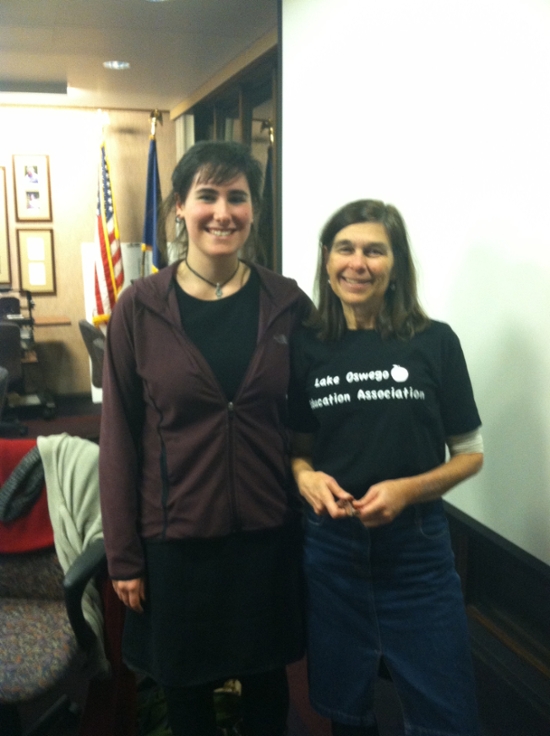Tags
"unions"
Reed Winter Externship Reflections 14: Number twenty-eight, The Union, Julia Selker

The unthinking college student might believe—having spent so much time in high school—that there is nothing more to learn there. Your intrepid author was not so quick to dismiss and got an inside look at the other side of the story.
It is early afternoon, and the overcast sky hangs heavily outside of the classroom window. A lone freshman stands with the whiteboard behind him, his slouching silhouette accentuated by the blinding glare of the projector. With an air of teenage detachment but the heart of a true citizen, he presents his research on Chris Christie’s scandal.
His classmates gravely weigh in on the controversy, their young minds heavy with the consequences of this political retaliation. The discussion is expertly guided by a figure that stands with a notepad at the back of the room.
This is Laura Paxson, bold and charismatic high school teacher. Her demeanor is stoic in the face of the tragedy that befell New Jersey bridge-crossers as their commutes were indefinitely delayed, but this is nothing compared to the questions that she will face when the bell tolls.
The students file out of the classroom jovially, excited to see their friends and family. Paxson’s work, however, is far from over. The transition is swift: one minute a history teacher, the next the president of the Lake Oswego teacher’s union.
There is no time to waste. Equipped with a heavy binder Paxson jumps in a sporty red car to hit the open road. Soothing but energetic tunes accompany her for the eight-minute journey to Oregon Education Association Headquarters. The Executive Board is gathering.
The Board is assembled in a conference room, munching pita chips as the anticipation builds. The small talk is engaging; these are not only colleagues but friends. Then, with authority and efficiency, Paxson calls the meeting to order. They look over the minutes from the last meeting and move to approve them. They quickly determine the state of the union’s budget, and then get down to business.
A teacher’s union has many projects, varying broadly in size and scope. Much of the meeting is spent discussing political action and how to mobilize the teachers to participate in lobbying activities that could improve the state of the education system. A ballot measure to decrease class sizes will need their support, for instance. They also plan to attend a convention for the improvement of education, where they will have conversations with politicians to gauge the candidates' dedication to the school system and influence their policy choices.
Suddenly the scope narrows: a single teacher was placed in an uncomfortable and difficult situation because the principal of the school did not prevent it. The tone in the room becomes grave as the executive board weighs their options for giving support to the teacher and making sure that the principal knows that such behavior is not acceptable. The teacher’s contract is referenced frequently, where their right to protection is stated clearly.
Another issue they faced was the possibility of a strike in Medford, because the local teachers’ contract is being violated. The Medford union asked for gestures of support, in the form of small quantities of money. This question will be brought up later in a larger meeting with representatives from all of the schools. There they will decide to send $100 to the Medford union as a symbol of solidarity.
The meeting draws to a close, but the President’s day is not yet done. Returning to the high school in her spicy red car, she presents the school board with a thank you card signed by the executive board of the union. It expresses their appreciation for the school board.
The differences between the school board meeting and the executive board meeting are stark. The school board discusses questions brought by community members, including the sheriff who wants a law that will allow him greater power in instances of underage drinking. The board discusses this seriously, but always with the winding tone of a philosophical question. The executive board, on the other hand, dealt with their many questions energetically, with one eye on the bureaucracy and the other on the people involved. The school board wondered at what they could do to abstractly “help the children” but the union’s executive board worked on actions that they could take to improve the individual well being of teachers, as well as the fate of the entire school system, with intense personal dedication.
